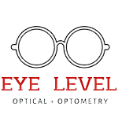
What is glaucoma?
As a general rule of thumb, understanding the problem can help you diagnose it and solve it. Such is the case for numerous eye conditions, which we tend to pass off as simple irritation or attribute it to the lack of sleep. However, when it comes to eye health, understanding the changes going on in your eyes can help you in making them dissipate, such as eye diseases, like glaucoma. Glaucoma is a rather severe group of eye diseases that can cause vision loss and even blindness by damaging the optic nerve, a nerve at the back of the eye. What makes this eye condition very troublesome is that symptoms start very slowly, and one might be inclined to overlook them or not notice them at all.
Making a thorough eye exam the only way to find out properly whether or not you have glaucoma. It is imperative that you prioritize your eye health and seek an expert eye doctor's opinion when you notice your vision deteriorating or even mild convenience in your eyes. At first, you might not even be aware of having the condition, as early in its stage's glaucoma doesn't usually have any symptoms. This is why most people don't even realize having the disease until it is relatively late. Eye care should be exercised when the signs become evident, such as you might start noticing changes in your peripheral vision. If you notice not being able to see through your peripheral vision, it is time to book an appointment with your optometrist today.
Who is at Risk?
Eye health is very important, considering it can be quickly impacted with the simplest of actions, and it requires constant care to be maintained. While anyone can get glaucoma, certain groups of people are at a higher risk of developing. Some major common risk factors are, but not limited to the following:
- Overage 40
- Family history of glaucoma
- Patients with diabetes
- High myopia
The chances of developing glaucoma increase as a person changes; for every ten years of age, the chances of developing glaucoma roughly doubles. This makes it common for people over sixty to have the eye condition over their younger counterparts. While numerous groups are susceptible to the disease, there also are numerous types of glaucoma.
What are the types of glaucoma?
There are different types of glaucoma. However, some are more common compared to others, such as open-angle glaucoma. The next less common type of glaucoma is Angle-Closure Glaucoma, primarily caused by blocked drainage canals. Another type of glaucoma is Normal-Tension Glaucoma (NTG), also commonly referred to as low-tension or normal-pressure glaucoma. In this type of normal-tension glaucoma, there is damage to the optic nerve without high eye pressure, resulting in uneasiness. Besides these, there are more variants of this eye condition, open-angle, and angle-closure glaucoma:
- Secondary Glaucoma
- Pigmentary Glaucoma
- Pseudoexfoliative Glaucoma
- Traumatic Glaucoma
Solving Problems with Eye Care
Before taking on any treatment plan, consult an eye specialist to get a confirmed diagnosis. Your eye care specialist may perform several tests, some of which can measure intraocular pressure, check for areas of vision loss, inspect the drainage angle, and more. The treatment plan needs to be thorough since the damage caused by glaucoma can not be fixed or reversed. However, frequent treatment and regular checkups can help slow or prevent vision loss, especially if you catch the disease in its early stages.
One effective approach to treatment is lowering the intraocular pressure – eye pressure. Depending on your eye condition, your treatment options can vary, including eye drops, laser treatments, surgery, and oral medications, or even a combination of these.
Eye Care for Glaucoma – Eyedrops
The usual course of treatment starts with prescription eye drops; this helps alleviate the eye pressure by draining fluid from your eyes or decreasing the amount of liquid in the eye. Based on the pressure your eye is under, be it low or high, a combination of eye drops can be prescribed. Prescription eyedrop medications may include:
- Prostaglandins
- Beta-blockers
- Alpha-adrenergic agonists
- Carbonic anhydrase inhibitors
- Rho-kinase inhibitor
- Miotic or cholinergic agents
Oral Medications, Surgery, and Other Therapies
Depending on the progress you have made with the eye drops, your doctor can prescribe oral medication, surgeries, and even other therapies. Oral medications can be carbonic anhydrase inhibitors. At the same time, other options can be laser therapy and various surgical procedures. You can opt for Laser trabeculoplasty, an option if you have open-angle glaucoma. This procedure requires small laser beams to open up channels in the trabecular meshwork.
Another eye care solution that you can avail of is getting Filtering surgery, a surgical procedure in which the surgeon creates an opening in the eye's white and then proceeds to remove a part of the trabecular meshwork. Whether you take up this option as a treatment plan or not depends on the diagnosis given by your optometrist. But one thing to keep in mind is to invest in eye care solutions to halt the problem on its track and maintain good eye health.

